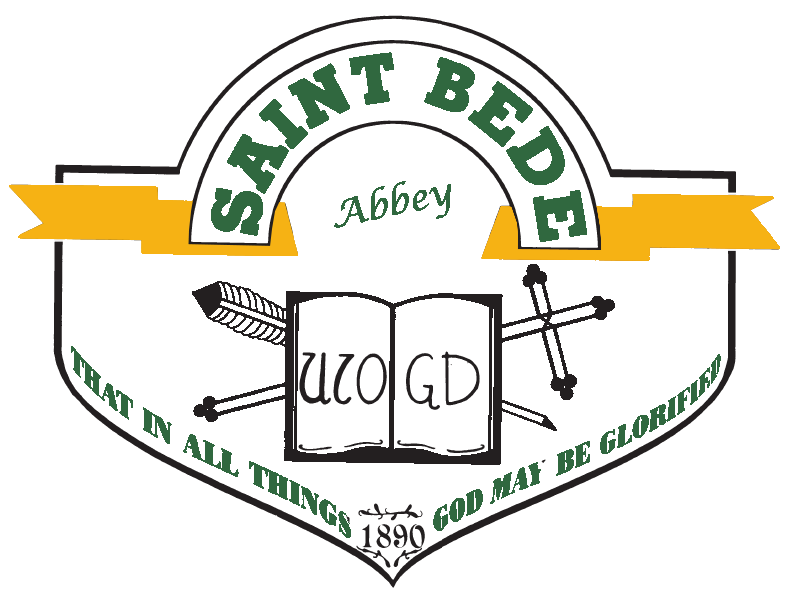Mass Stipends
Photo taken by Fr. Dominic Garramone, OSB at Most Holy Trinity, St. Louis, MO
Mass stipends have a long history in the church. How we understand Mass stipends is related to how we understand the Eucharist.
In the letters of Saint Paul, particularly First Corinthians, there is an emphasis on Eucharistic taking, giving thanks, breaking and giving. In these communities that Saint Paul established the Eucharist was an act of the community gathered around the table in which bread and wine were taken, blessed, and shared, and the poor were fed. The elements of the Eucharistic meal were offered by a member(s) of the worshipping community. Later in his letter Paul will severely criticize the Corinthians for excluding the poor from the eucharistic assembly. When the poor are excluded there is a break in the community and in the Lord's body.
Despite the possibility of excluding the poor, the Eucharistic taking, giving thanks, breaking, and giving continued to grow and to mature in the church. Indeed, Justin Martyr, an excellent witness of the early development of the Mass, recorded in his treatise entitled Apologia the following: “the wealthy who are willing make contributions, each as he pleases, and the collection is deposited with the president, who aids orphans and widows, those who are in want because of sickness or some other reason, those in prison, and visiting strangers – in short, he takes care of all in need.” Likewise, in the earliest centuries their developed the offering of gifts in the name of the dead. In Saint Augustine’s time memorial meals at the tombs of the dead moved from the cemetery to inside the church. In his Confessions, Saint Augustine recounts how his mother prepared such a memorial meal. As with the Corinthian community memorial meals for the dead led to abuses. Saint Ambrose of Milan in his treatise entitled On Elijah and Fasting exhorts people to abandon the practice of a memorial meal for the dead in the church building. Instead, they are to give alms directly to the poor, to bring a prayerful heart to church, and to take part in the communion of the Body of the Lord. The eucharistic community marked by its taking, giving thanks, breaking, and giving allowed it to share its gifts with the poor and extended the communion gesture to its dead.
The seventh to ninth centuries saw a shift in the understanding of the Eucharist. The Mass which had been simple in Saint Paul’s time began to adopt some aspects of the kingly court of the day. As the Mass continued to adopt these kingly aspects people began to view Christ as a regal figure. As a result, more people felt removed from the presence of Jesus and so felt removed from the regular reception of the Eucharist. With the development of private masses and the increase of the number of priests to celebrate those Masses, it seemed that the celebration of the Eucharist became the purview of the priest alone. A way for the faithful to gain access to the sacrament was through a stipend or offering.
The Council of Trent in the sixteenth century put some reforms in place to curtail the medieval developments. The Second Vatican Council with its reform of the Mass reminded the church that worship included the full and active participation of the faithful. The revision of Canon law in 1982 furthered the reforms of the Second Vatican Council and helped to clarify the understanding of the purpose of a stipend.
Here are some things to remember when it comes to Mass stipends:
1. Sacraments of the church are not bought or sold.
2. Priests can celebrate a Mass intention regardless if a stipend is offered.
3. In every Mass a priest celebrates the prayers benefit the entire church.
4. Those who contribute a Mass stipend show a concern for the church and its ministers. In this case a person who contributes a Mass stipend shows a concern for Saint Bede Abbey and its community.
5. By offering to help with the Abbey’s essential support the one offering the stipend enters into the sacrifice of the Mass in a sacrificial way whether that person is present or not.
6. A priest can offer a Mass with an attached stipend as the main celebrant wearing a chasuble and stole. Or, a priest can offer a Mass with an attached stipend as a concelebrant wearing an alb and a stole.
7. The price of a stipend ought not to be so high that only a few can afford it. At the same time, the price of a stipend ought not to be so small that it cheapens the spiritual value of it. With those criteria in mind, a stipend at St. Bede is $10.00 per stipend.
If you wish to offer a Mass stipend at Saint Bede Abbey please contact Fr. Michael at 815-250-0702 or email him at mcalhoun@st-bede.com.

